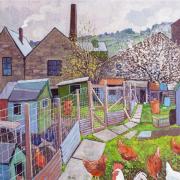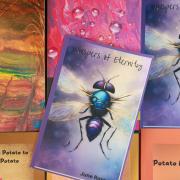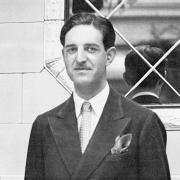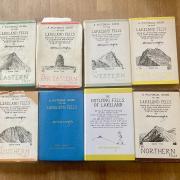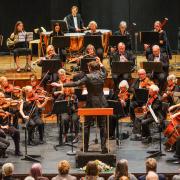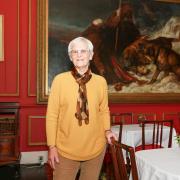A lottery grant has raised hopes of turning the legacy of Lancashire industrial wealth into a world-class attraction. Mike Glover investigates
There were tears of joy and relief when the news came through that one of the world’s best collections of boats had been given a lifeline by the National Lottery Fund. But the team at Lakeland Arts Trust behind the plans to revive Windermere Steamboat Museum and Heritage Boat Collection know the hard work has only just begun.
It has already taken four years for the trust to assess the remarkable collection and formulate a rescue plan. There will be another four years before the museum off Rayrigg Road on the west side of the lake, near Bowness, finally reopens to the public.
But at the halfway mark, the Heritage Lottery Fund recognition is a huge vote of confidence in the project. And one typical steamboat is due to be back on the water this year.
The museum was one of just five projects in the country to be awarded roughly equal shares in the �52 million hand-out for 2011. It was the only one in the north and the largest ever award to the Cumbria area.
The initial award to Windermere Steamboats was �494,000 which will enable plans to progress, with the launch of an architects’ competition for the final design and the appointment of a curator to develop the project.
That should unlock �7.5 million for the capital work to begin in two years time. The trust has to raise �2.5 million itself, making a �10 million total cost for extensive refurbishment of the wet-dock, a new museum for the exhibition of boats that will never be able to return to the water, conservation workshops, cafe, shop, toilets and all the other ingredients of a world-class museum.
The 40 boats in the collection include two medieval dug-out canoes, the original Windermere ferry, which was rowed with horse and cart on board, and 1960s speedboats which used to create water speed records. But it is the nine steamboats which gave the collection its name and stirthe soul.
‘The steam launches were the pleasure boats of Victorian and Edwardian industrialists who used the lake as their holiday home,’ said Charlotte Upton, the project co-ordinator.
Most of those industrialists made their money in Manchester and the rest of Lancashire, which provides a link with one of the trust’s other success stories, and explains why an arts trust wanted to get involved in boats.
Apart from Abbot Hall Art Gallery in Kendal, the trust also runs Blackwell Arts and Crafts House, further along the lake.
It was another lottery grant that enabled them to buy and renovate the former home of the Holt family of Manchester brewers, who had it designed by Baillie-Scott in 1898. Re-opened in 2001, it now attracts 40,000 visitors a year and is a proven sustainable venture, just what the Lottery Heritage Fund is looking for.
The intention is for all the work to be finished on the boat collection by 2015, which will include some of the boats going back on the water, and for tourists to view the vessels in dry docks. Around seven acres of Windermere waterfront, owned by the museum, will also be opened up for visitors to arrive at the museum by boat.
Restoration will take place on every vessel, each of which tells the story of boat building in the Lake District and how vessels were used for commerce and leisure since the 12th century.
‘It’s an exciting time and the fact that we are the only project in the north to be gaining from this money emphasises how important the project is and how the HLF have seen that importance,’ said the trusts chief executive Gordon Watson.
‘This collection is of national significance,’ added trust chairman Martin Ainscough. ‘We want to create a world-class museum which will be a major boost to the regeneration of Bowness and the Lake District.
‘The trust will launch an international competition to select the architect to design a building appropriate to this very special site.’
The collection has twice come closen to being lost. The museum was first opened in 1977 after the collection was compiled over the years by famous � Lakeland builder George Pattinson.
After his death the trustees feared they would be unable to continue operating the museum and there was a risk the collection would have to be disposed of.
Lakeland Arts Trust came to the rescue in March 2007, but the state of the boats and their housing was such that the museum has remained closed to the public ever since. The boats were taken out of the water to preserve them.
Then in the floods of November 2009, when the surface of Windermere rose eight feet above its normal level, the boats would have been swamped if most of them hadn’t been already put into dry-dock.
Esperance, one of two left in the wet dock, had its funnel resting between the roof joists, otherwise it would have crashed through the roof. The new buildings will be designed to make sure the collection can survive any future extreme weather.
In February this year boat-builder Adrian Stone was appointed conservation work shop manager to look after the collection.
He started to source the equipment and wood necessary to renovate the boats, starting with Osprey, which will be the first boat back in the water, hopefully by the end of this year.
Adrian is helped by a team of around ten volunteers who have expertise as engineers and wood-workers. All the boilers and engines had to be lifted out of the boats before restoration started and the volunteers hand turn them to keep them in running order until they are ready to be returned to their berths.
There is much work to be done and challenges to overcome but the lottery grant gives real hope that this unique collection will thrive and steam boats will be seen gracing Windermere again.
Treasures of the collection
Once complete, it is hoped the museum will attract at least 80,000 visitors a year to see the collection which includes:
Dolly, built in 1850, making her the oldest mechanically powered boat in the world, which spent 60 years at the bottom of Ullswater, being rescued in 1962 by Lakeland builder George Pattinson, the founder of the collection.
Esperance, built in 1869 for Henry Schneider, who lived in the building which became the Belsfield Hotel in Bowness and used to be served breakfast by a butler while taking the boat to the foot of Windermere to catch the train to work in Barrow. It was later used as the model for Captain Flint’s houseboat in Arthur Ransome’s iconic children’s book, Swallows and Amazons.
Margaret, built in the 1780s and the oldest surviving sailing yacht in the UK.



